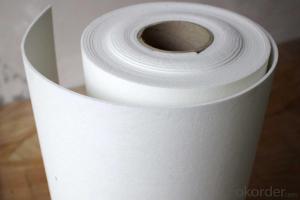Welcome to the world of HVAC and ductwork! Whether you’re a seasoned professional or a DIY enthusiast, connecting flexible duct can be a challenging task. But fear not, for we are about to embark on a journey filled with techniques, tips, and a bit of fun along the way. Let’s dive in!
Understanding the Basics
&8212;&8212;&8212;&8212;&8212;&8212;&8212;&8212;&8212;-
Before we get our hands dirty, it’s essential to understand the basics of flexible ducts. These are made from a variety of materials, including metal, plastic, and even fabric. They are designed to be flexible, allowing them to navigate around obstacles and fit into tight spaces. But what makes them truly special is their ability to connect various components of an HVAC system seamlessly.
The first step in connecting flexible ducts is to measure and cut them to the right size. This requires a bit of precision, but don’t worry, we’ll guide you through it. Once you have your ducts ready, it’s time to think about the connections. There are several types of connectors available, including clamps, screws, and even adhesives. Each has its own set of advantages and disadvantages, so choose wisely.
The Art of Connection
&8212;&8212;&8212;&8212;&8212;&8212;&8212;&8212;&8212;-
Now, let’s talk about the actual process of connecting the ducts. It’s not just about slapping two pieces together and calling it a day. There’s an art to it, a finesse that comes with practice and patience. Here are some steps to keep in mind:
1. Align the ducts: Make sure the ends of the ducts are properly aligned. A slight misalignment can lead to air leaks and reduced efficiency.
2. Secure the connection: Once aligned, secure the connection using your chosen method. This could be anything from a simple clamp to a more complex adhesive process.
3. Check for leaks: After securing the connection, it’s crucial to check for any leaks. You can do this by running your hand along the connection or using a specialized leak detection tool.
4. Seal the deal: If you find any leaks, seal them immediately. This can be done using duct tape or a specialized sealant.
5. Repeat the process: Connecting multiple ducts can be a repetitive task, but it’s essential to maintain the same level of care and attention for each connection.
Tips and Tricks
&8212;&8212;&8212;&8212;&8212;&8212;&8212;&8212;&8212;-
While the process of connecting flexible ducts may seem straightforward, there are a few tips and tricks that can make your life easier:
– Use the right tools: Having the right tools for the job can make all the difference. This includes a good quality measuring tape, a sharp utility knife for cutting, and the appropriate connectors for your ducts.
– Work in a clean environment: A clean and organized workspace can help prevent mistakes and ensure a more efficient process.
– Take your time: Rushing through the process can lead to errors and poor connections. Take your time to ensure each connection is secure and leak-free.
– Be mindful of the materials: Different materials may require different connection techniques. Be sure to familiarize yourself with the specific requirements of your duct material.
– Practice makes perfect: As with any skill, practice is key to mastering the art of connecting flexible ducts. Don’t be discouraged if your first few attempts aren’t perfect; keep trying and you’ll get there.
The Emotional Side of Ductwork
&8212;&8212;&8212;&8212;&8212;&8212;&8212;&8212;&8212;-
Connecting flexible ducts may not seem like an emotionally charged task, but there’s more to it than meets the eye. For many, it’s a symbol of accomplishment, a testament to their ability to tackle a challenging project. It’s also a way to save money by doing it yourself, which can be incredibly satisfying.
Moreover, when you successfully connect the ducts and see the system working efficiently, there’s a sense of pride that comes with it. It’s a reminder that with the right knowledge, tools, and patience, you can achieve great things.
So, whether you’re doing it for the thrill of the challenge or the satisfaction of a job well done, connecting flexible ducts can be a rewarding experience. Embrace the process, learn from your mistakes, and most importantly, have fun along the way.
In Conclusion
&8212;&8212;&8212;&8212;&8212;&8212;&8212;&8212;&8212;-
Connecting flexible ducts is a task that requires precision, patience, and a bit of creativity. By following the techniques and tips outlined in this article, you’ll be well on your way to mastering this skill. Remember to take your time, use the right tools, and enjoy the process. After all, it’s not just about getting the job done; it’s about the journey and the sense of accomplishment that comes with it.
Happy connecting!

